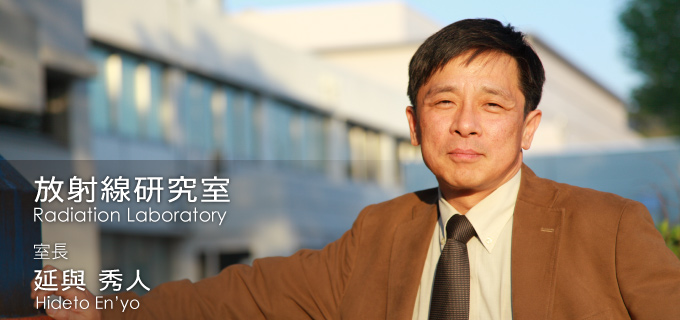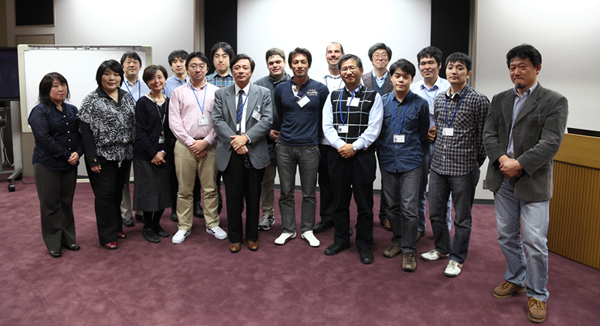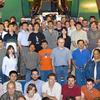Research Facility Development Division
- Accelerator Group
- Accelerator R&D Team
- Ion Source Team
- RILAC Team
- Cyclotron Team
- Beam Dynamics & Diagnostics Team
- Cryogenic Technology Team
- Infrastructure Management Team
- Research Instruments Group
- Automated Operation Technology Team
- BigRIPS Team
- SAMURAI Team
- Data System Team
- Detector Team
- Instrumentation Development Group
Nuclear Science Research Division
- Radioactive Isotope Physics Group
- Nuclear Dynamics Research Group
- Few-body Systems in Physics Laboratory
- Cosmic Radiation Laboratory
- Astro-Glaciology Research Unit
- Nuclear Many-body Theory Laboratory
- RHIC Physics Research Group
- Three-Body Nuclear Force Laboratory
- Meson Science RIKEN ECL Research Team
Accelerator Applications Research Division
Directly under the Nishina Center
Closed Laboratory
Radiation Laboratory

- 1984年学振研究員(在東京大学)
- 1985年学振海外特別研究員(在 CERN)
- 1987年CERN 研究員
- 1989年京都大学理学部助手
- 1994年京都大学理学部助教授
- 2001年理化学研究所主任研究員(現在に至る)
- 2001年理研BNL研究センター実験グループリーダー
- 2007年理研基幹研究所先端技術基盤部門・部門長
- 2009年理研仁科加速器研究センター・センター長(現在に至る)
Staff

Research Areas
Nucleons, such as protons and neutrons, are a bound state of constituent quarks glued together with gluons. The detail structure of nucleons, however, is not well understood yet. Especially the mechanism to build up the spin of proton, which is 1/2, is a major problem in physics of the strong force. The research goal of Radiation Laboratory is to solve this fundamental question using the world first polarized-proton collider, realized at RHIC in Brookhaven National Laboratory (BNL) in USA. RHIC stands for Relativistic Heavy Ion Collider, aiming also to create Quark Gluon Plasma, the state of Universe just after the Big Bang. RIKEN-BNL Research Center (RBRC) directed by N. Samios carries our core team at BNL for those exciting researches using the PHENIX detector. We have found that the proton spin carried by gluons is indeed small, which is a very striking finding beyond our expectations. Recently we successfully identified W boson in the electron/positron decay channel, with which we established the method to determine how much anti-quarks carry the proton spin. Other than the activities at RHIC we are preparing new experiments at SPring-8, J-PARC and Fermilab to study the nature of hadron. We are also performing technical developments such as novel ion sources, fine pitch pixel detectors and neutron optical devices.
Research Subject
- Spin physics with relativistic polarized-proton collisions at RHIC
- Study of nuclear matter at high temperature and/or at high density
- Technical developments on radiation detectors and accelerators
List of Selected Publications
- PHENIX Collaboration (A. Adare (Colorado U.) et al.).:
"Inclusive cross section and double-helicity asymmetry for π0 production at midrapidity in p+p collisions at√s =510 GeV"
Phys.Rev. D93 (2016) 1, 011501 - PHENIX Collaboration (A. Adare et al.).:
"Charged-pion cross sections and double-helicity asymmetries in polarized p+p collisions at √s =200 GeV"
Phys.Rev. D91 (2015) 3, 032001 - PHENIX Collaboration (A. Adare et al.).:
"Measurement of transverse-single-spin asymmetries for midrapidity and forward-rapidity production of hadrons in polarized p+p collisions at s√=200 and 62.4 GeV"
Phys.Rev. D90 (2014) 1, 012006 - PHENIX Collaboration (A. Adare et al.).:
"Inclusive cross section and single transverse spin asymmetry for very forward neutron production in polarized p+p collisions at sqrt{s}=200 GeV"
Phys.Rev. D88 (2013) 3, 032006 - PHENIX Collaboration (A. Adare et al.).:
"Cross sections and double-helicity asymmetries of midrapidity inclusive charged hadrons in p+p collisions at sqrt{s}=62.4 GeV"
Phys.Rev. D86 (2012) 092006 - PHENIX Collaboration (A. Adare et al.).:
"Observation of direct-photon collective flow in sqrt{s_{NN}}=200 GeV Au+Au collisions"
Phys.Rev.Lett. 109 (2012) 122302 - PHENIX Collaboration (A. Adare et al.).:
"Cross section and double helicity asymmetry for eta mesons and their comparison to neutral pion production in p+p collisions at sqrt(s)=200 GeV"
Phys.Rev. D83 (2011) 032001. - PHENIX Collaboration (A. Adare et al.).:
"Measurement of Transverse Single-Spin Asymmetries for J/psi Production in Polarized p+p Collisions at sqrt{s} = 200 GeV"
Phys.Rev. D82 (2010) 112008, Erratum-ibid. D86 (2012) 099904. - PHENIX Collaboration (A. Adare et al.).:
"Event Structure and Double Helicity Asymmetry in Jet Production from Polarized p+p Collisions at sqrt{s} = 200GeV"
Phys.Rev. D84 (2011) 01200 - PHENIX Collaboration (A. Adare et al.).:
"Cross Section and Parity-Violating Spin Asymmetries of W+- Boson Production in Polarized p+p Collisions at sqrt(s)=500 GeV"
Phys. Rev. Lett. 106, 062001 (2011)





